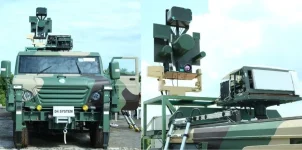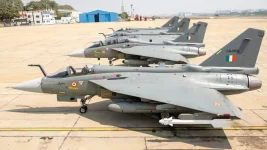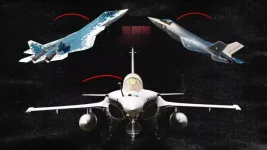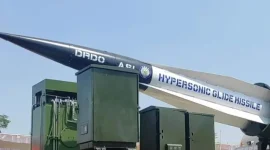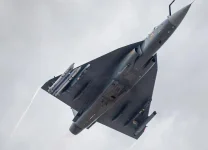- Views: 2K
- Replies: 6

The Indian Air Force (IAF) is set to significantly enhance the defensive capabilities of its Su-30MKI fighter jet fleet with the integration of the indigenously developed Dual Colour Missile Approach Warning System (DC-MAWS).
This advanced system, developed by the Defence Research and Development Organisation (DRDO), will provide crucial missile detection and warning capabilities, addressing a long-standing gap in the Su-30MKI's defensive suite.
The DC-MAWS is a cutting-edge system designed to operate in the mid-infrared (IR) spectrum, enabling it to accurately detect and track incoming missiles from various generations.
Its dual-color capability utilizes spectral data from two IR bands to effectively differentiate between actual missile threats and non-threatening sources like sunlight reflections or background radiation. This significantly reduces false alarms, ensuring pilots receive accurate and reliable warnings.
The system incorporates six dual-color IR sensors strategically positioned around the aircraft to provide 360-degree coverage. These sensors continuously scan the surrounding airspace, detecting missile launches and tracking their trajectory.
The collected data is then processed by an advanced onboard system equipped with sophisticated algorithms for clutter rejection and precise tracking. This system calculates the time-to-impact and assesses the threat level posed by the incoming missile.
Key Features of DC-MAWS
- Comprehensive spatial coverage: Achieves full 360-degree coverage with wide field-of-view sensors, ensuring complete situational awareness.
- Dual-band IR sensors: Enhances the probability of missile detection while minimizing false alarms.
- Threat discrimination: Accurately identifies missile threats by distinguishing them from background noise and other IR sources.
- Wide threat handling range: Capable of detecting and tracking a variety of missile types, including both older and newer generations.
- Advanced data processing: Features a high-speed airborne data recording system for real-time threat analysis.
- Time-to-impact calculation: Provides pilots with critical information to make informed decisions on evasive maneuvers.

